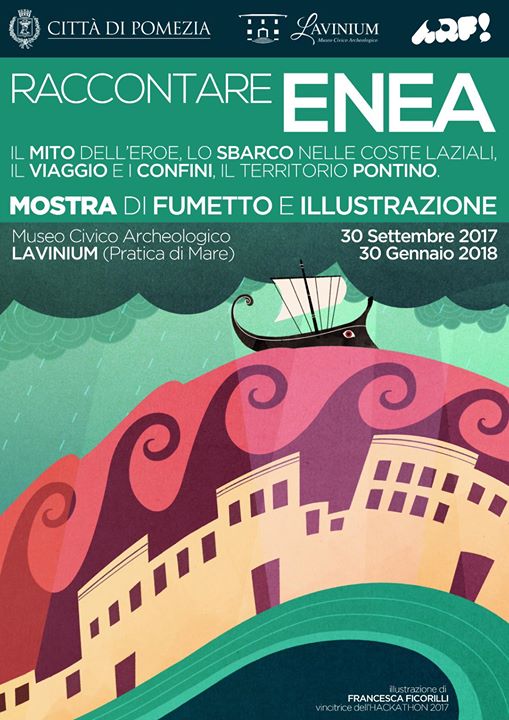
The Archaeological Museum, founded in 2005, is located in a building located in the village of Pratica di Mare, near the medieval village that occupies the acropolis of the ancient Lavinium center, the sacred city of the Latins. In the various sections are relics dating from between the tenth century. B.C. and the Roman period, including we can highlight in the "Minerva Tritonia" hall the statue of Minerva and large terracotta votive statues, mainly female, coming from the sanctuary of the goddess attended by the aristocracy lavinate. Very interesting rituals black-figure vases imported from Greece, including the famous cup of Castor, of the sixth century. BC, and other votive objects found in the sanctuary of the XIII altars, located south of the hill on which stood the village. Among the oldest artifacts it highlights the grave goods of the proto-historic necropolis with tombs dating between the tenth and seventh century. B.C. they belong to jewelry and female tools, spindles, spindle whorls, loom weights and spools, exposed in the space labeled "Mundus Muliebris" along with other heads and busts illustrating the rites practiced in the sanctuary. The last room is dedicated to Aeneas, the Trojan hero; I have collected many of the objects found in the burial equipment SO-CALLED Heroon Enea, funeral monument in which the ancients thought was deposed mythical character, among these are to be noted in addition to the personal equipment, the sword, the spear and the sacrificial knife, numerous pots decorated with incisions to preserve and drink wine, large skewers with iron andirons used to roast the meat in the ritual banquet and curious objects like bronze grating of the seventh century. BC, used to "dress" the wine with goat cheese as he wanted the Greek fashion. At the heart of the extraordinary doors room in tuff of the fourth century. B.C. that closed the dell'Heroon cell in the last reconstruction of the monument. The museum has a very special option, as it combines multimedia and traditional display suitable for a diverse audience. It is, in particular, the "talking statues", effective system through a video animates the statue, donated by children and lavinate aristocracy girls in the moment of transition between adolescence and adulthood. In the space dedicated to Aeneas, the charming blue room, the video "The Journey" reconstructs images and computer graphics course followed by Aeneas, before arriving in New York, near the modern Torvaianica; follows "The ship", valid 3D reconstruction dell'allestimento of a Bronze Age ship, the era of Enea. In the next room "Civitas Religious" a 'compelling digital reconstruction illustrates the history of the Sanctuary of the altar one of the most important holy places of Lazio in the Archaic period, the benchmark for the Latin people. A virtual priest speaks directly to visitors by exposing the deep meaning of the worship of the god of the altar, probably Indiges Aeneas, the founder founder of the holy city, which is directly linked to the Heroon of Aeneas, on show in the last section of the museum. Here a 3D documentary accompanies the traditional display clear as studies have so far been able to reconstruct the fascinating story linked to Aeneas and his mysterious disappearance after the battle against Mezenzio. Just Trojan hero has dedicated the last page where the Museum through a fascinating and engaging video, the hero, with his questions and his doubts, he turns with hope to his father Anchises.